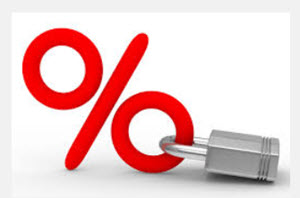For a fixed rate mortgage loan (FRM), the interest rate is fixed for the duration of the loan. This type of home mortgage loan is very common in the United States, and not very common in Europe. In the United States, an FRM loan will typically have a repayment scheme where the monthly payment is exactly the same for the duration of the loan. e.g. $1,500 per month for 30 years. Another option is the linear payback scheme were the borrower makes large monthly payments at first and then gradually make smaller and smaller payments as the principal goes down.
 An adjustable rate mortgage loan (ARM) doesn’t have a fixed interest rate for the duration of the loan. In theory, an ARM loan can have an interest rate that will fluctuate on a daily basis, but this is uncommon in reality. Instead, the typical ARM loan will have an interest rate that is fixed for a somewhat longer period of time, e.g. 12 months. At the end of a fixed rate term, the interest rate is renegotiated.
An adjustable rate mortgage loan (ARM) doesn’t have a fixed interest rate for the duration of the loan. In theory, an ARM loan can have an interest rate that will fluctuate on a daily basis, but this is uncommon in reality. Instead, the typical ARM loan will have an interest rate that is fixed for a somewhat longer period of time, e.g. 12 months. At the end of a fixed rate term, the interest rate is renegotiated.
If you want to negotiate better terms and conditions for your FRM loan (e.g. lower interest rate) you will typically need to go through a process called remortgaging. Instead of simply getting the terms of the FRM loan changed, you obtain a new mortgage loan with better terms and use it to pay off the old mortgage loan. The same real estate is used as collateral.
All other things being equal, you can expect a somewhat lower interest rate for an ARM loan than for an FRM loan. This is because if the general interest rate level in the country goes down, a borrower with a high-interest FRM loan can remortgage and get a lower interest rate. If, on the other hand, the general interest rate level in the country goes up, the borrower will stay with their old loan and the lender will have to accept receiving an interest rate that is lower than the current market rate. Therefore, the FRM loan is generally seen as bit more risky for the lender.
This article was last updated on: April 26, 2016

